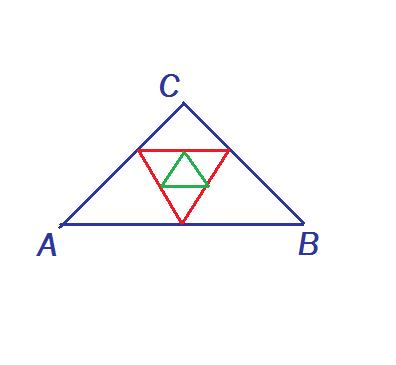
Q: As shown in figure ABC is an equilateral triangle with each side of resistance 'R'. Inside the triangle there are infinite no. of equilateral triangles each having resistance varying as R/2,R/4,R/6....of each side of respective triangles. Find the equivalent resistance between A and B.










